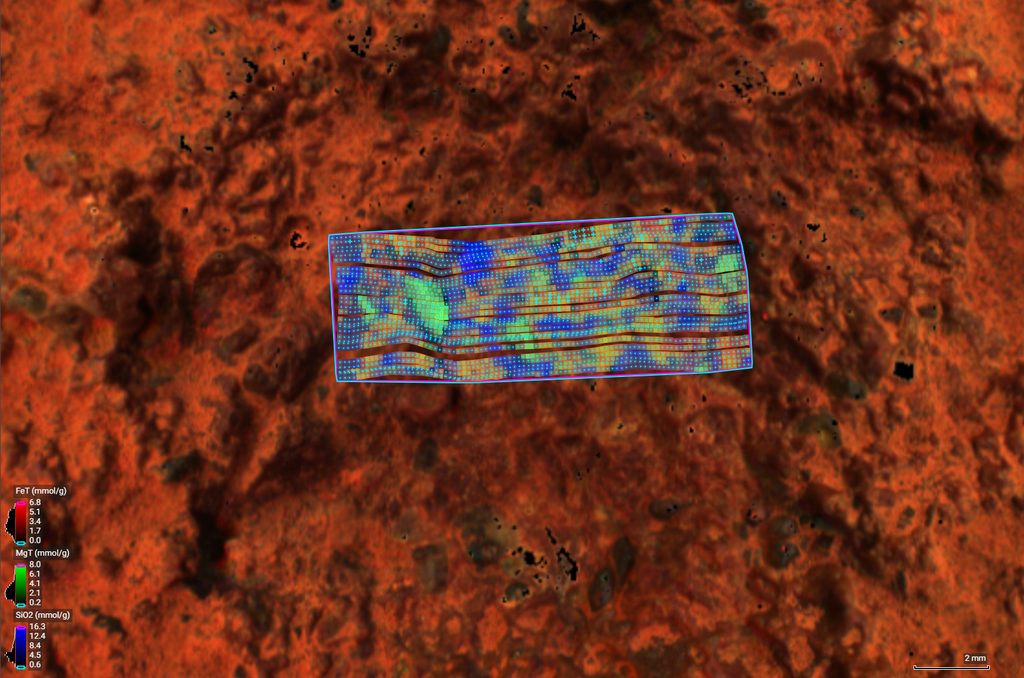Perseverance's PIXL Instrument Examines 'Thunderbolt Peak'
This image of a rock target nicknamed "Thunderbolt Peak" was created by NASA's Perseverance Mars rover using the Planetary Instrument for X-ray Lithochemistry (PIXL) – an instrument on the end of the rover's robotic arm that determines chemistry and mineral composition by zapping a rock with X-rays. Each blue dot in the image represents a spot where an X-ray hit. By measuring the interaction of the X-rays with the rock, scientists can map which minerals are present in a rock's surface and how much of them, plus the size, shape, and crystallinity of the rock grains.
In the case of Thunderbolt Peak, three elements were especially abundant: iron, magnesium, and silica. The image and data were collected on July 8, 2024, the 1,202nd Martian day, or sol, of Perseverance's mission.
A key objective for Perseverance's mission on Mars is astrobiology, including the search for signs of ancient microbial life. The rover is also characterizing the planet's geology and past climate, which paves the way for human exploration of the Red Planet. NASA's Jet Propulsion Laboratory, which is managed for the agency by Caltech in Pasadena, California, built and manages operations of the Perseverance rover.
For more about Perseverance: https://science.nasa.gov/mission/mars-2020-perseverance/
